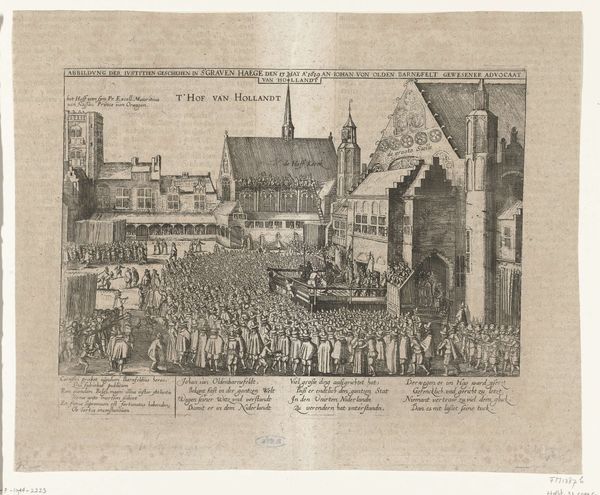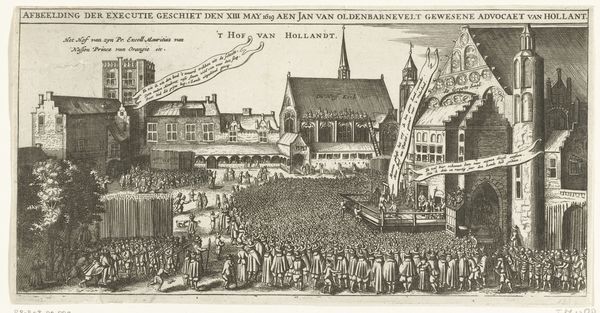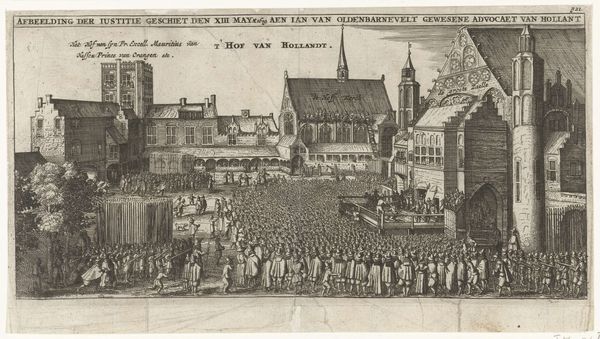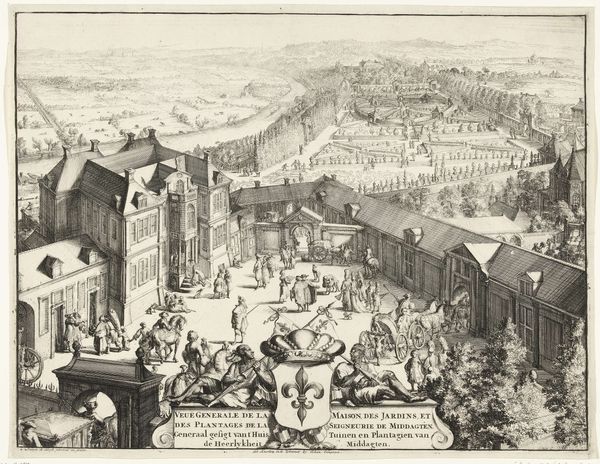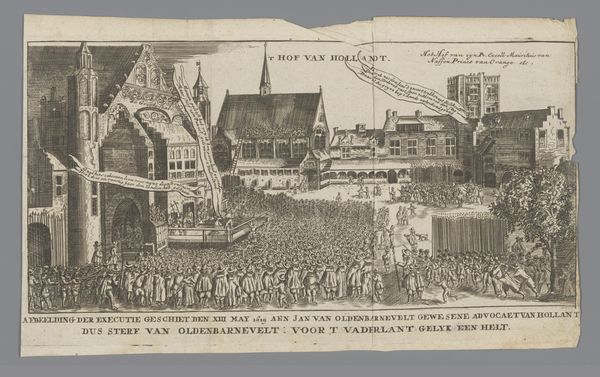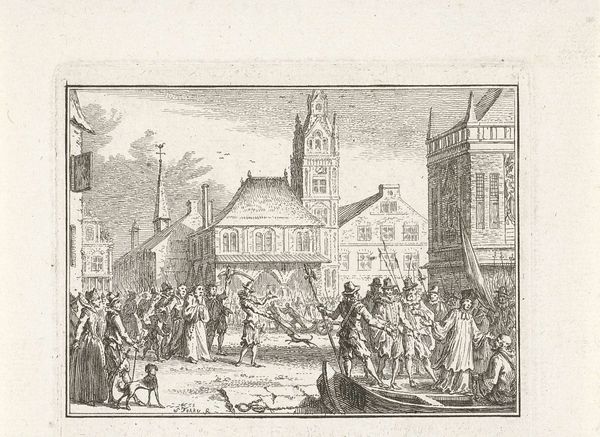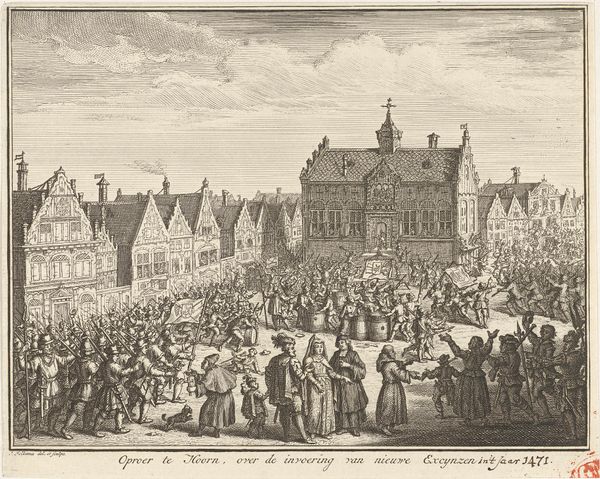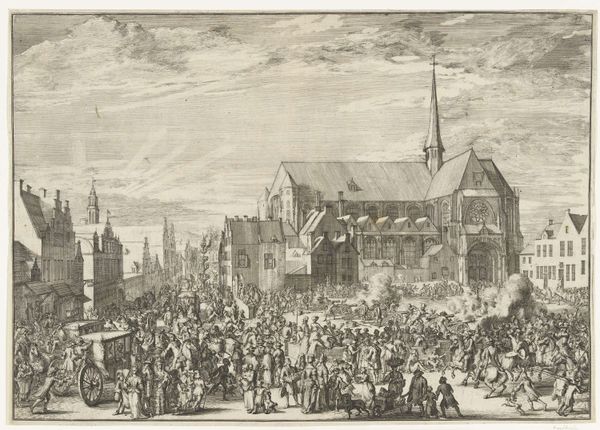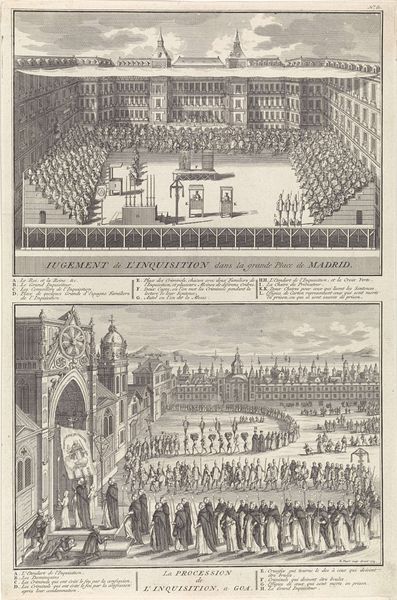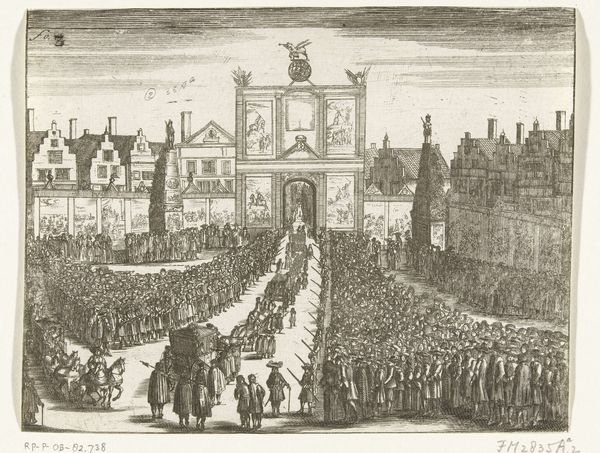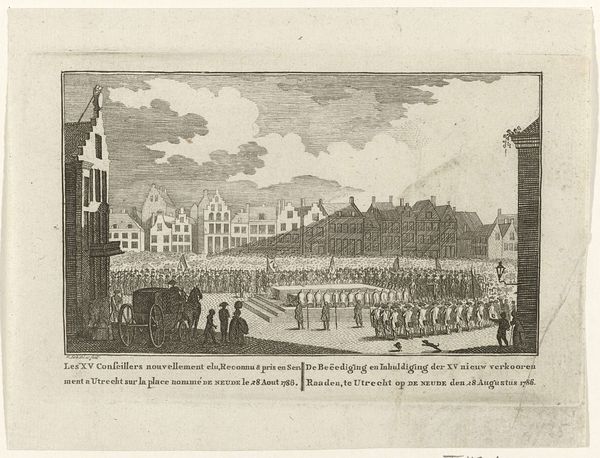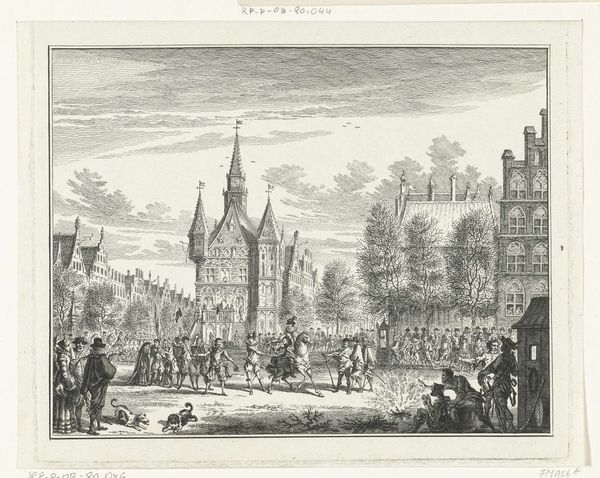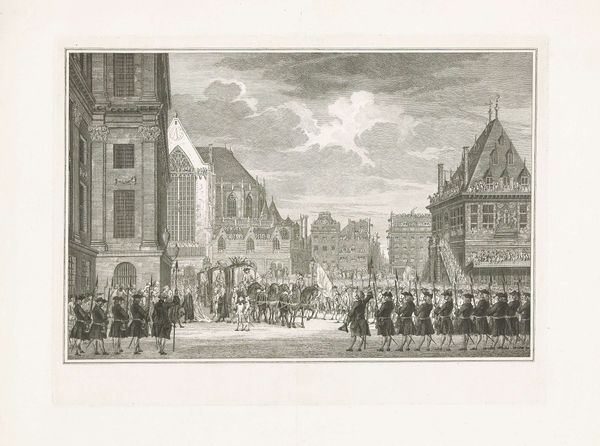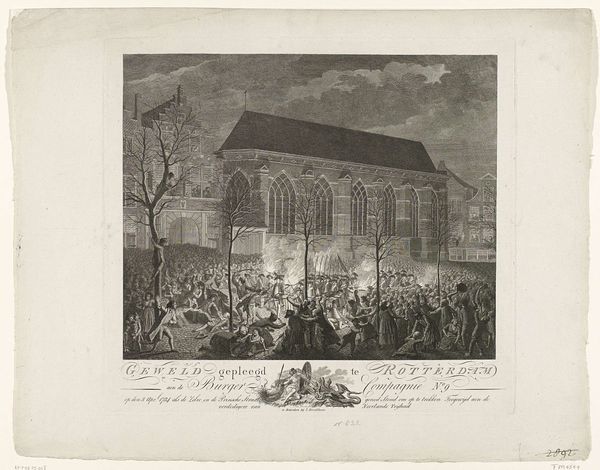
print, engraving
#
pen and ink
#
baroque
#
dutch-golden-age
# print
#
line
#
cityscape
#
history-painting
#
engraving
#
historical font
Dimensions: height 134 mm, width 249 mm
Copyright: Rijks Museum: Open Domain
Curator: What strikes you most about this piece, shall we say “The Beheading of Johan van Oldenbarnevelt, 1619?" It's an engraving, dating somewhere between 1707 and 1724 and is attributed to an anonymous hand, depicting a dark event during the Dutch Golden Age. Editor: A chilling image! I am immediately struck by the overwhelming sense of spectacle; the thronging crowd, the imposing architecture that frames the grim event. Even through the meticulous lines of the engraving, the weight of collective participation is palpable. It has that almost ritualistic drama you often see with public executions in those times, I think. Curator: Exactly! Look at how the anonymous artist has composed the scene; all the lines seem to converge on the central platform, highlighting the act itself. Do you pick up on any cultural undercurrents as you examine the historical moment represented? Editor: Indeed. It appears staged, even propagandistic in a way. I'm noticing banners adorned with dense text flowing from the surrounding structures. Those serve almost as a chorus in a Greek tragedy, shaping the perception of the event. Symbols of power and authority seem designed to legitimise the brutal scene. And, Johan’s death became emblematic of the conflict between republican and stadtholder forces. Curator: Yes, and consider the power of engravings like these back then. This was visual communication at a pivotal moment in history. By capturing such scenes in ink, printmakers made historical events accessible for wider interpretation. It speaks to how the creation and distribution of images, however partisan, can play a profound role in forming and manipulating cultural memory. Editor: And not to mention, the act of public beheading itself holds an unsettling allure—a morbid fascination that has been ingrained within humanity. Think of the severed head as a symbol of lost intellect or betrayed wisdom and consider the act as a sacrifice to restore political order… It gives me goosebumps! Curator: Agreed. It reminds me how visual culture acts as an archive of human conflict, forever forcing us to confront uncomfortable realities from the past. Thank you for sharing your perspective. Editor: Likewise, for spotlighting such a dramatic convergence of history, art, and deeply unsettling symbolism!
Comments
No comments
Be the first to comment and join the conversation on the ultimate creative platform.
